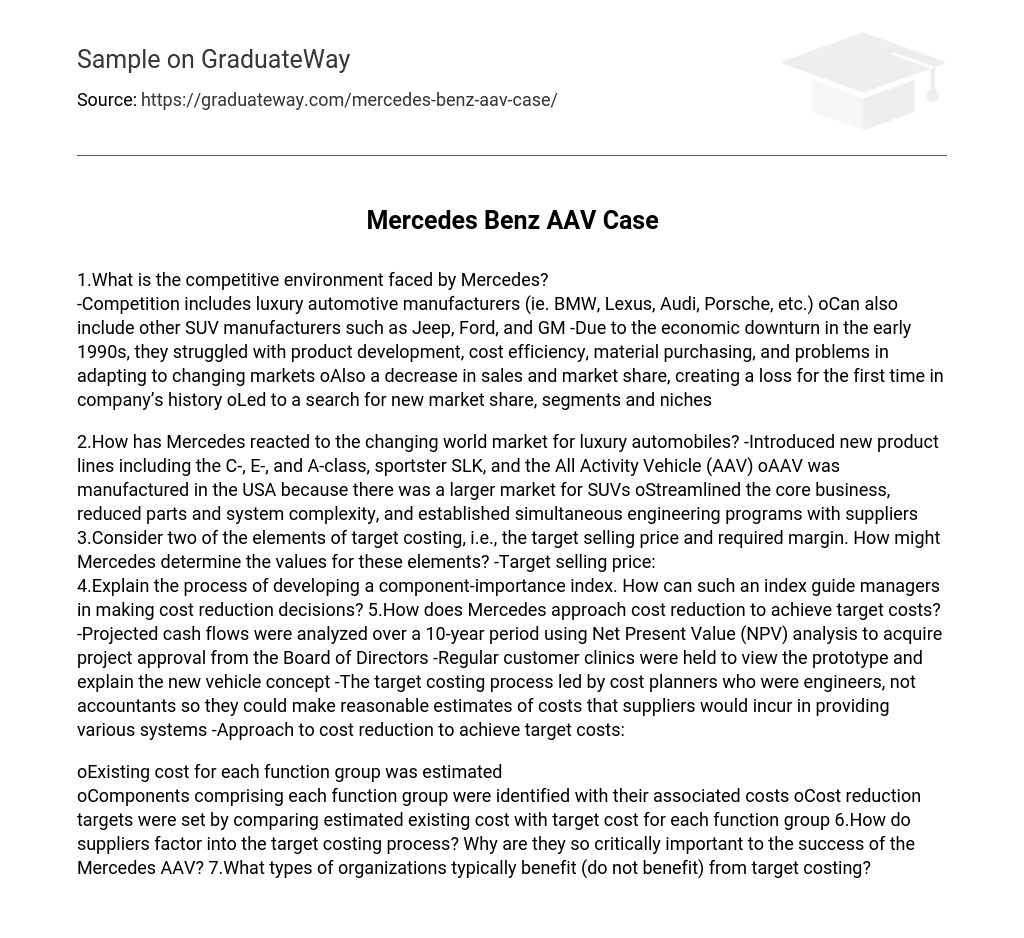1.What is the competitive environment faced by Mercedes?
-Competition includes luxury automotive manufacturers (ie. BMW, Lexus, Audi, Porsche, etc.) oCan also include other SUV manufacturers such as Jeep, Ford, and GM -Due to the economic downturn in the early 1990s, they struggled with product development, cost efficiency, material purchasing, and problems in adapting to changing markets oAlso a decrease in sales and market share, creating a loss for the first time in company’s history oLed to a search for new market share, segments and niches
2.How has Mercedes reacted to the changing world market for luxury automobiles? -Introduced new product lines including the C-, E-, and A-class, sportster SLK, and the All Activity Vehicle (AAV) oAAV was manufactured in the USA because there was a larger market for SUVs oStreamlined the core business, reduced parts and system complexity, and established simultaneous engineering programs with suppliers 3.Consider two of the elements of target costing, i.e., the target selling price and required margin. How might Mercedes determine the values for these elements? -Target selling price:
4.Explain the process of developing a component-importance index. How can such an index guide managers in making cost reduction decisions? 5.How does Mercedes approach cost reduction to achieve target costs? -Projected cash flows were analyzed over a 10-year period using Net Present Value (NPV) analysis to acquire project approval from the Board of Directors -Regular customer clinics were held to view the prototype and explain the new vehicle concept -The target costing process led by cost planners who were engineers, not accountants so they could make reasonable estimates of costs that suppliers would incur in providing various systems -Approach to cost reduction to achieve target costs:
oExisting cost for each function group was estimated
oComponents comprising each function group were identified with their associated costs oCost reduction targets were set by comparing estimated existing cost with target cost for each function group 6.How do suppliers factor into the target costing process? Why are they so critically important to the success of the Mercedes AAV? 7.What types of organizations typically benefit (do not benefit) from target costing?





